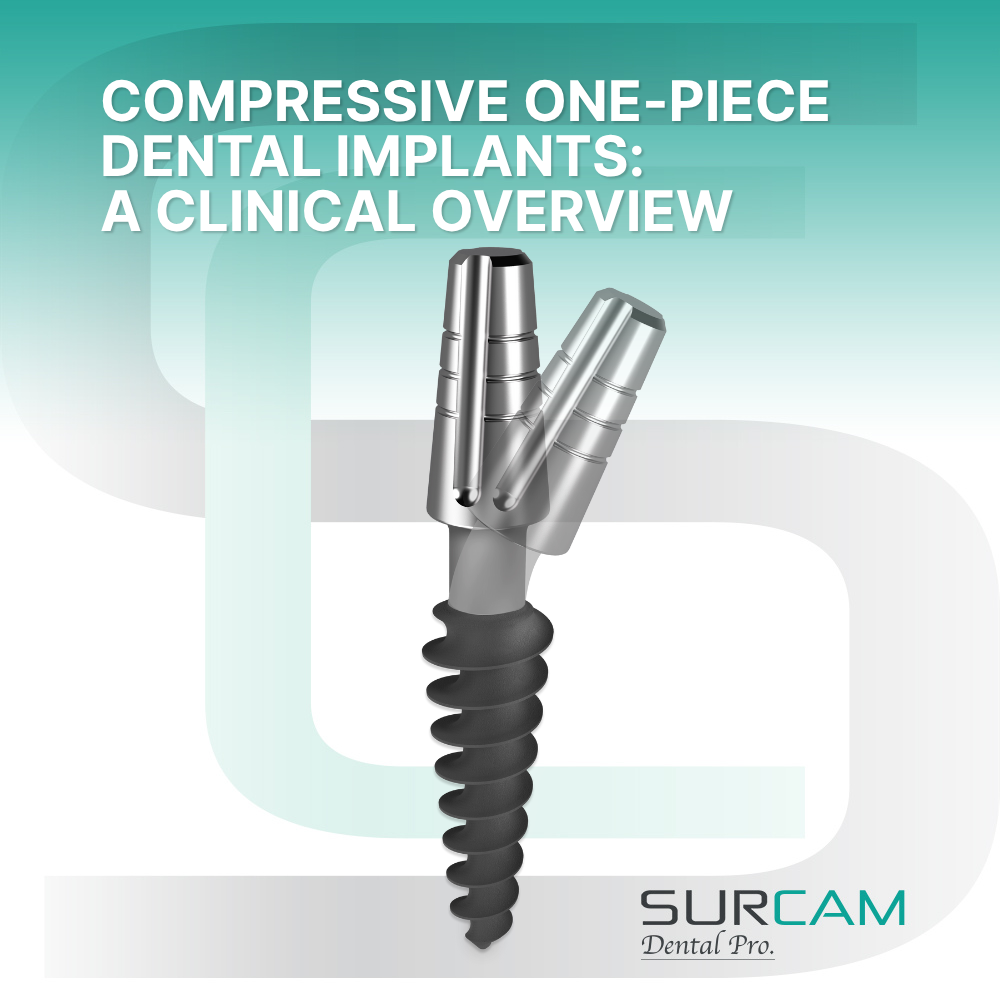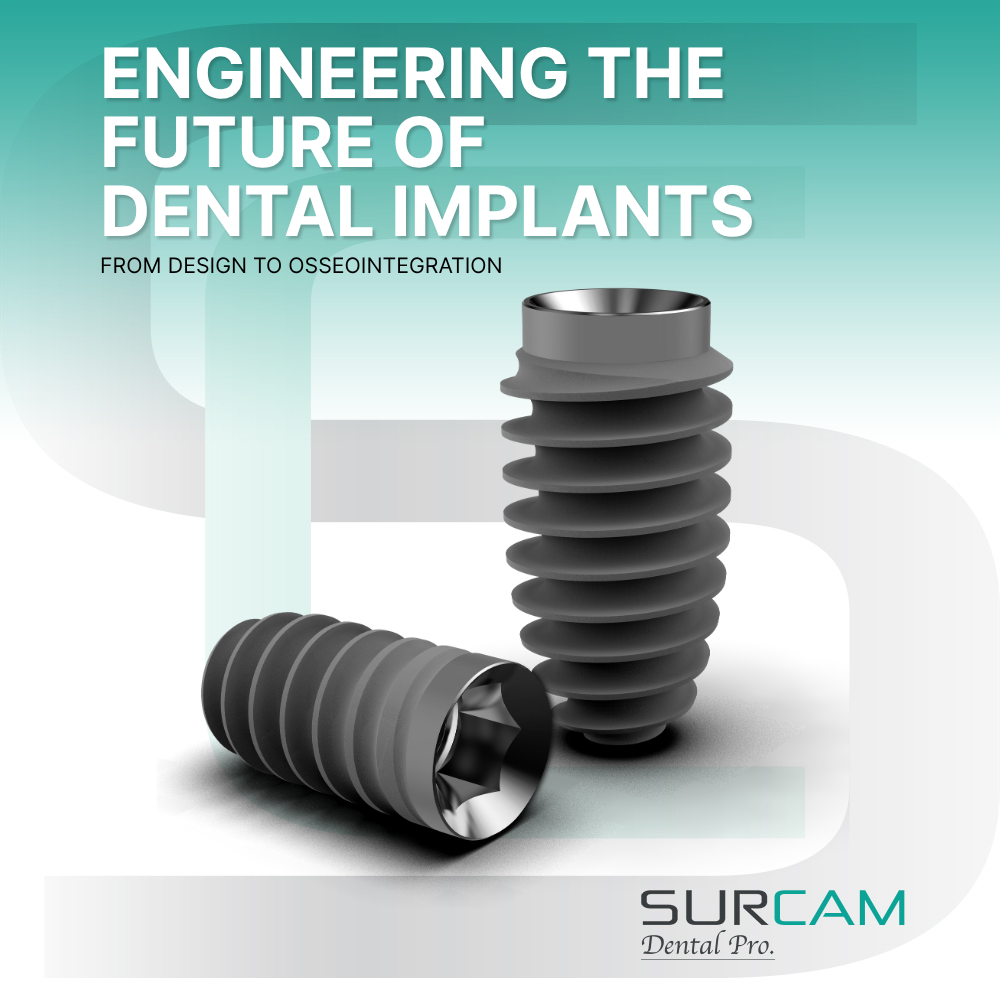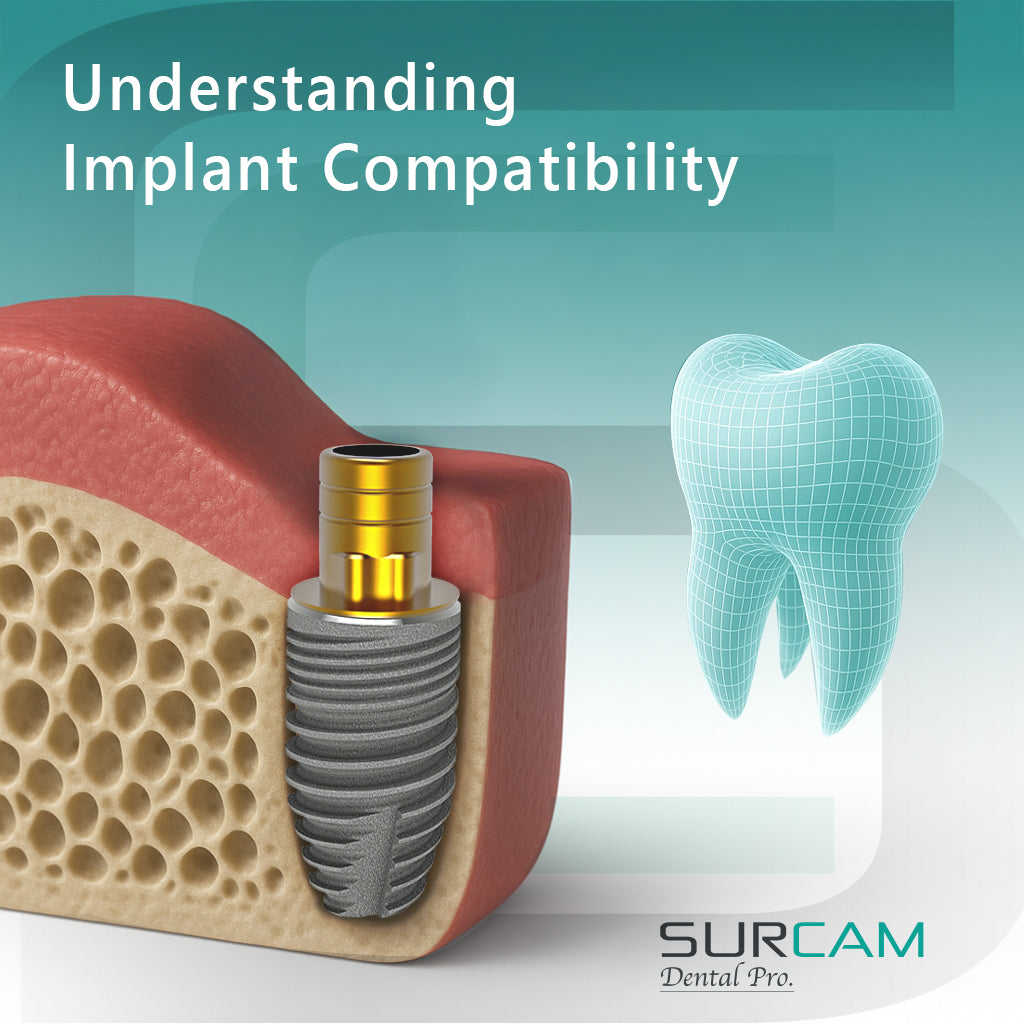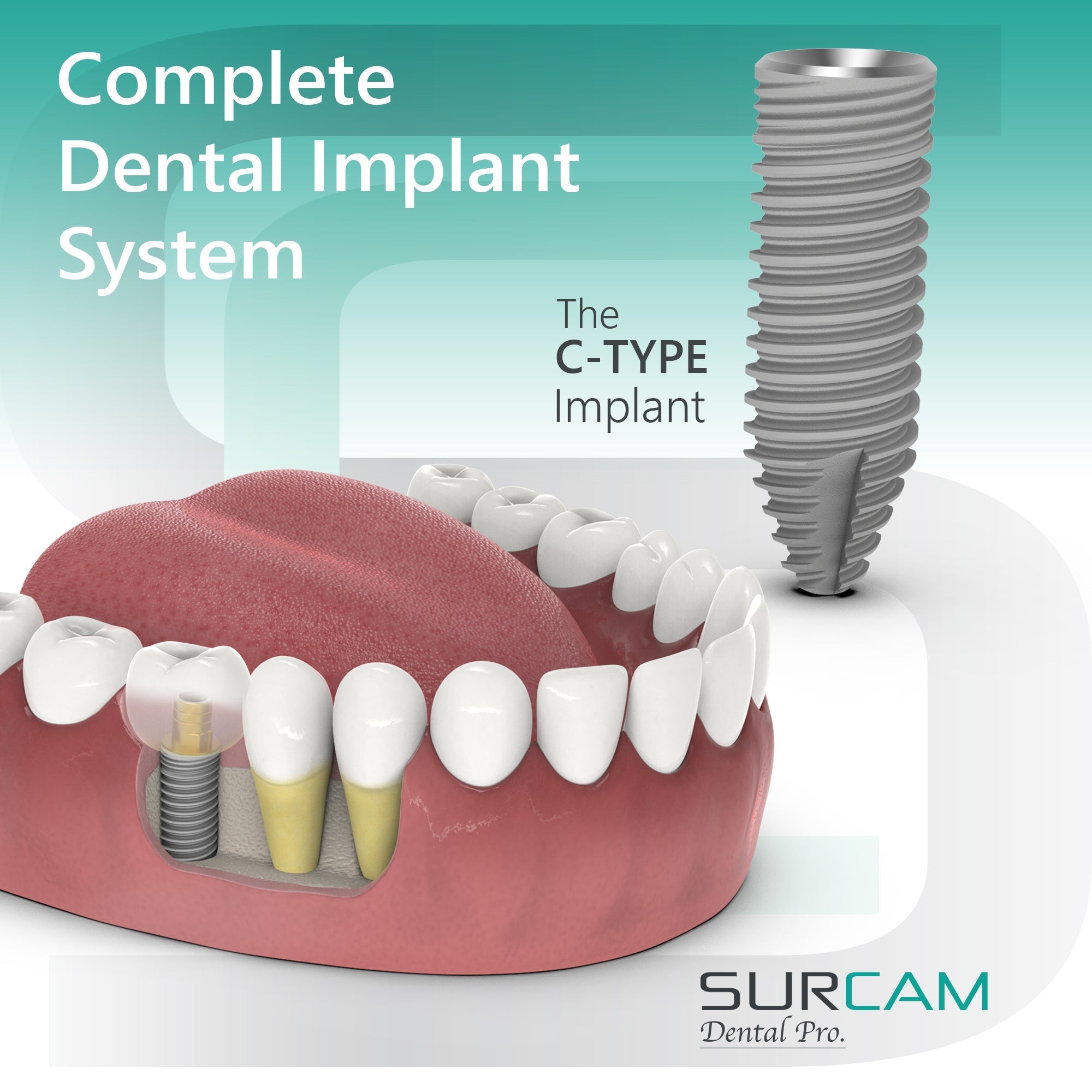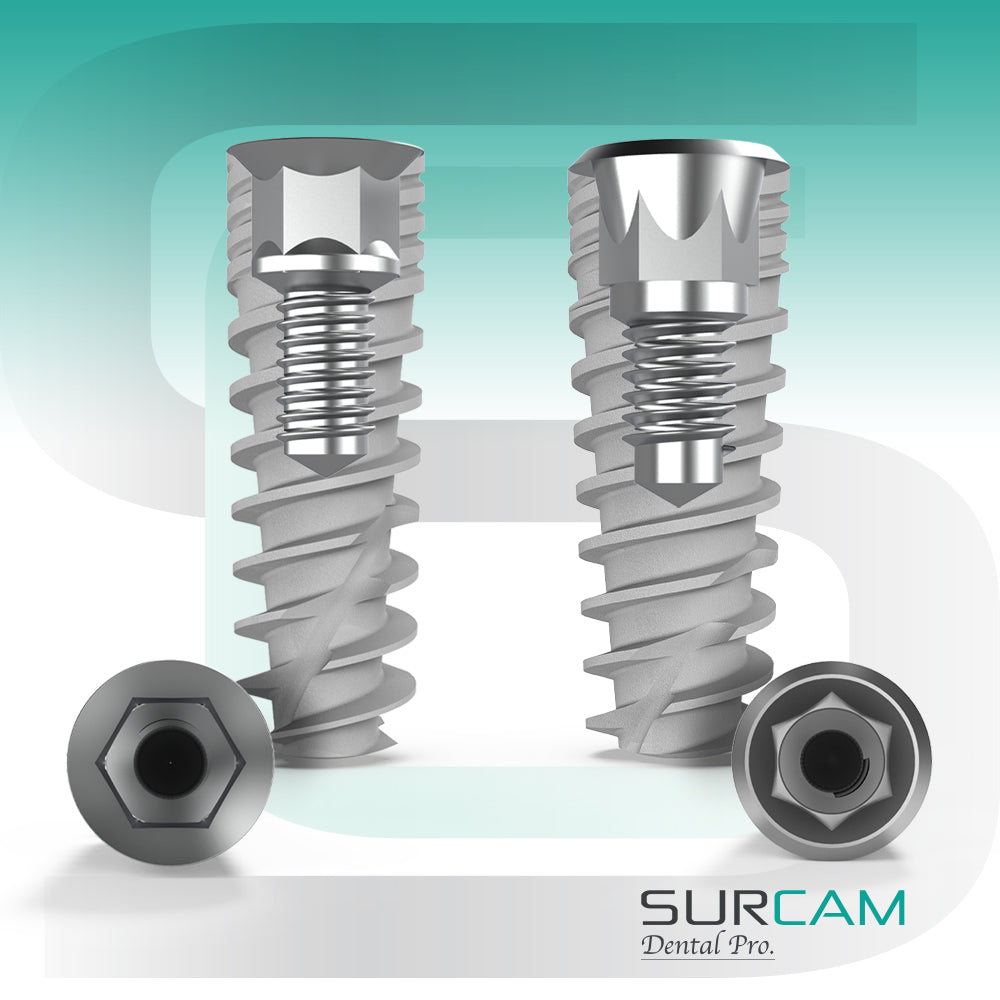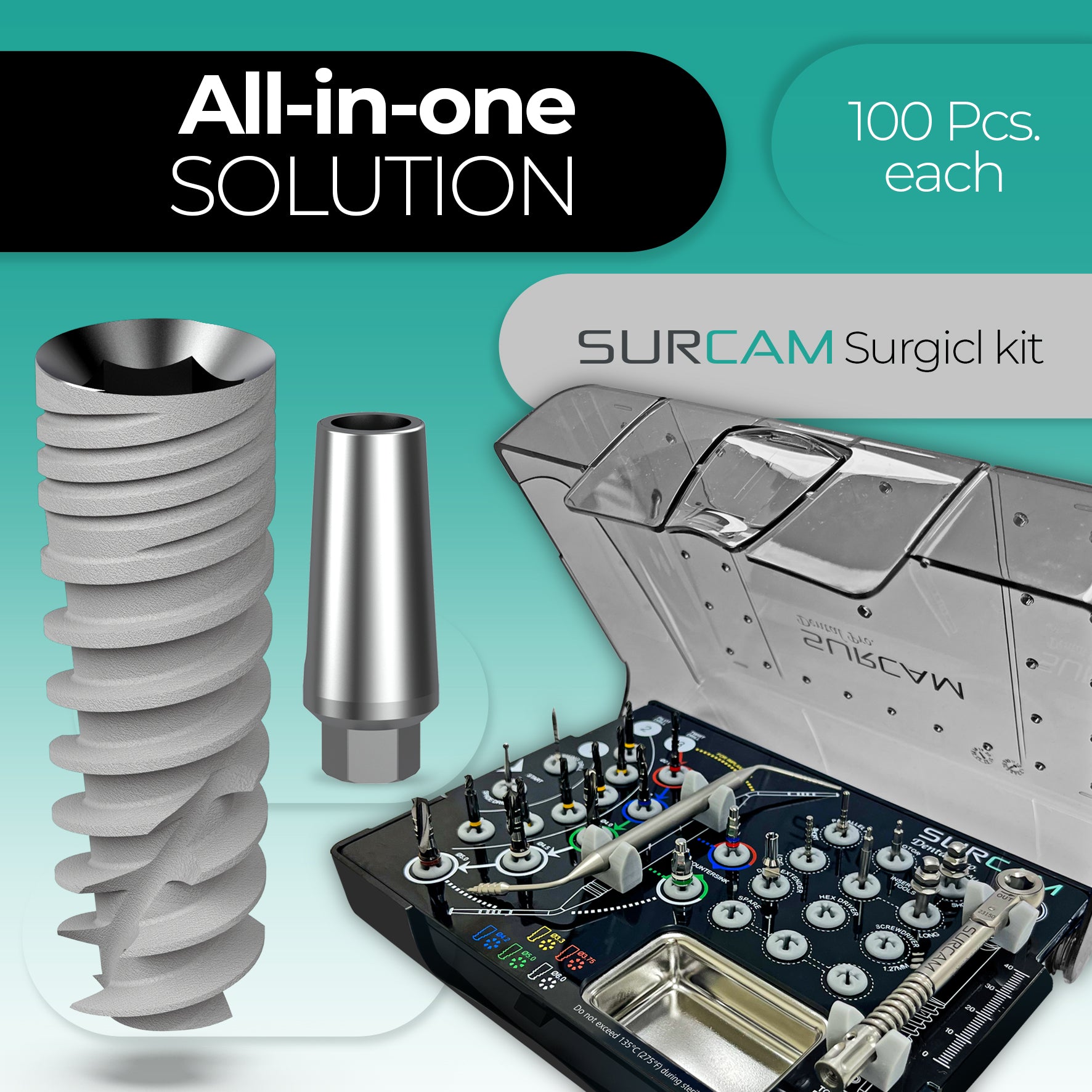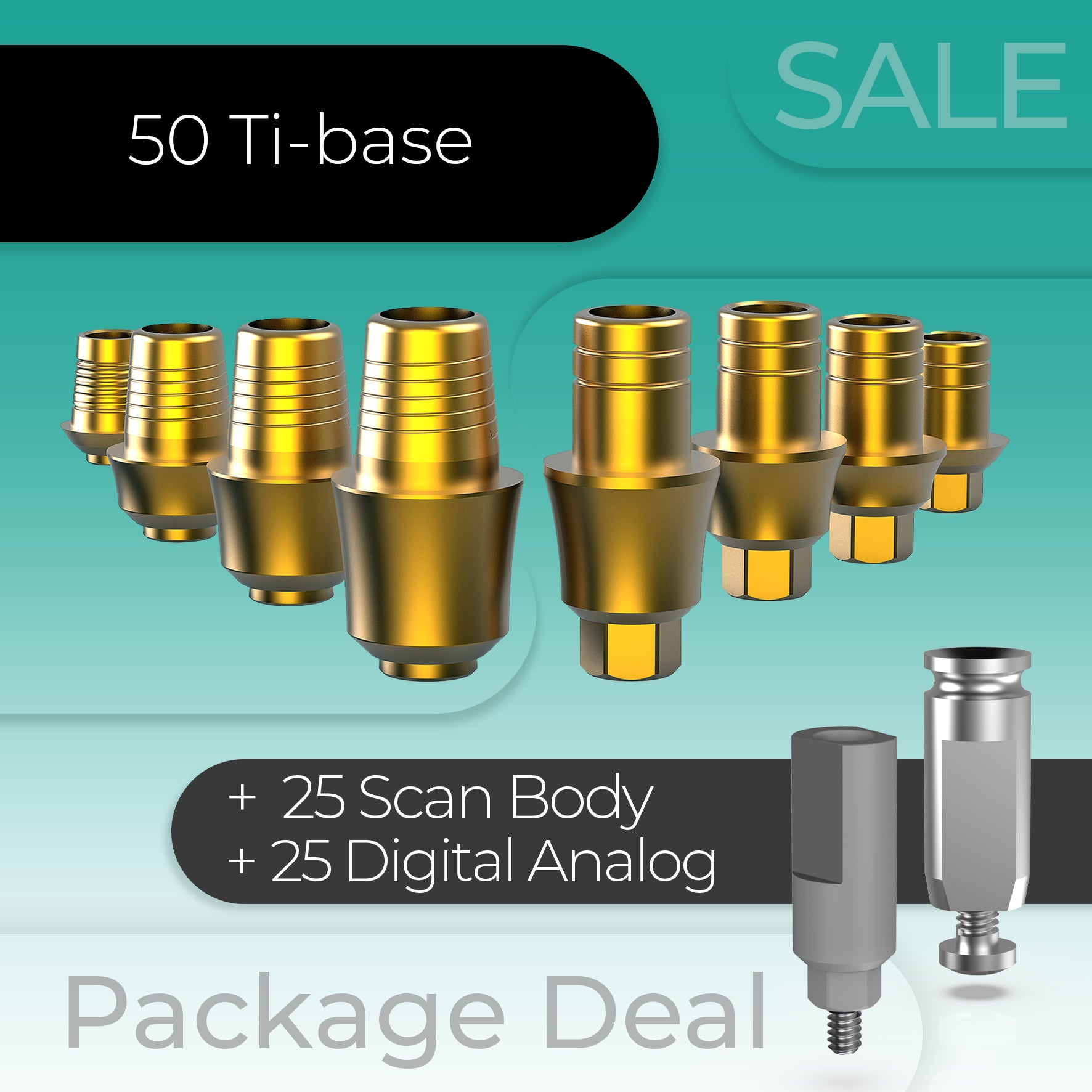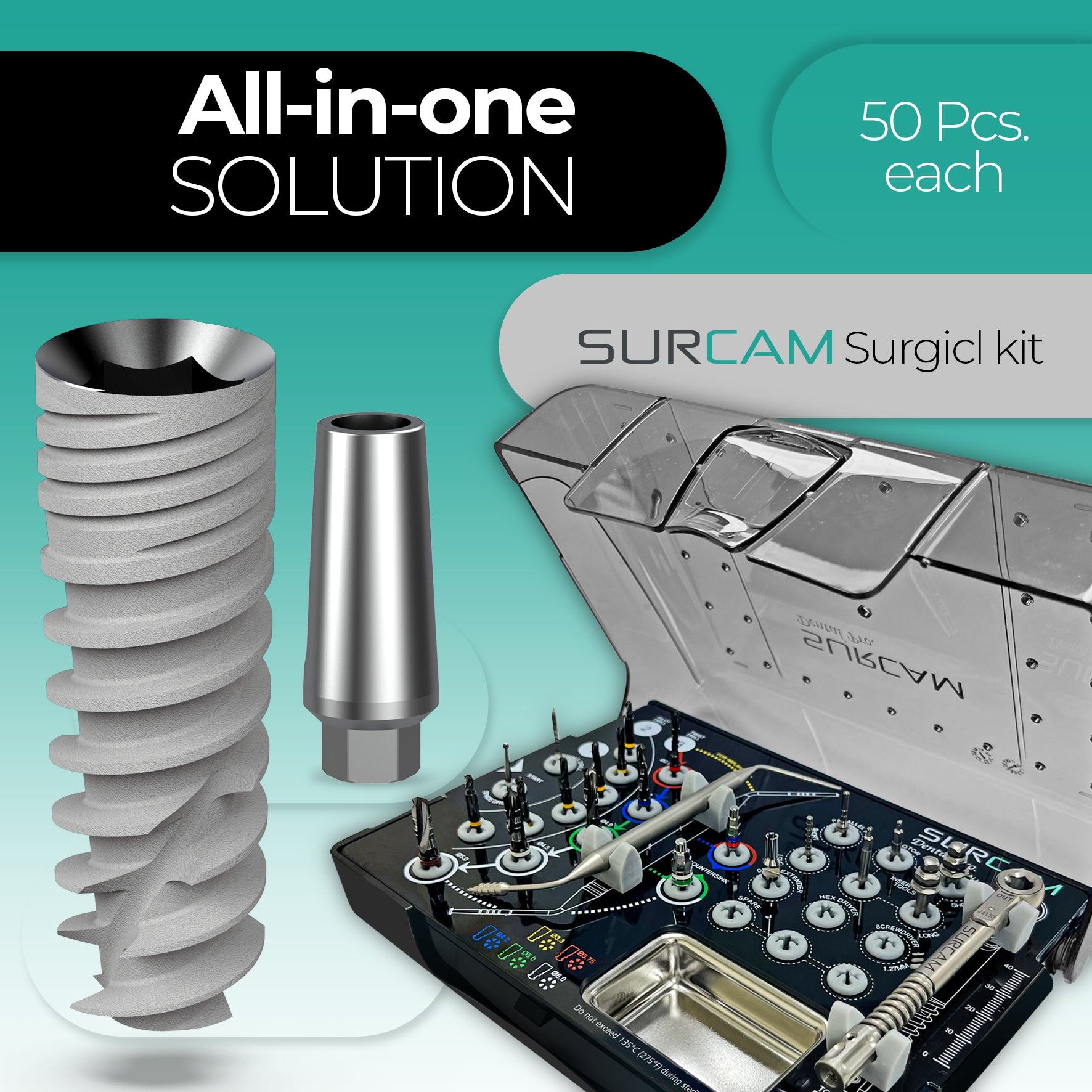Compressive One-Piece Dental Implants: Stability, Speed, and Simplified Workflow
- by Shay ben shabat
Compressive One-Piece Dental Implants: Stability, Speed, and Simplified Workflow
Introduction – Redefining Implant Stability
In modern implantology, compressive dental implants—also known as single-piece or monoblock implants—represent a paradigm shift in achieving primary stability and immediate function. Unlike conventional two-piece implants that require a separate abutment connection, compressive implants integrate the fixture and abutment into a single titanium body. This one-piece configuration eliminates the microgap that often contributes to bacterial leakage, peri-implant bone loss, and screw loosening.[1]
Clinical studies confirm that the absence of an implant–abutment junction significantly reduces mechanical complications and enhances peri-implant bone preservation. According to the NIH publication on one-piece implants, this design not only supports high cortical stabilization but also enables immediate loading and reduces surgical trauma, making it ideal for patients seeking faster, minimally invasive rehabilitation.[2]
Surcam Dental’s Compressive Implant System builds on this principle through precise engineering and material optimization. Manufactured from Grade 4 titanium, these implants are designed for controlled bone condensation during insertion. The result is a system that achieves remarkable primary stability, even in soft bone (D3–D4), and allows for immediate or early prosthetic restoration.
Surcam’s one-piece compressive design also integrates a polished transmucosal neck for soft-tissue friendliness and easier hygiene maintenance—critical in cases of narrow ridges or uneven bone height. Every aspect of the implant geometry, from thread depth to neck profile, is developed to maintain biological harmony, structural resilience, and restorative efficiency.
What Are Compressive Dental Implants?
A compressive dental implant is a one-piece implant designed to compress the surrounding bone during insertion. This bone condensation increases bone density around the implant body, improving its mechanical engagement and long-term stability. The implant achieves immediate fixation without relying solely on cortical bone engagement, making it suitable for both immediate placement and immediate loading protocols.
Key Biomechanical Features
-
Bone Compression Effect: Special self-condensing threads compact the trabecular bone, providing increased contact and immediate mechanical stability.
-
Single-Piece Construction: The integrated abutment eliminates micro-movement and bacterial microleakage risks associated with implant–abutment interfaces.
-
Immediate Function: Because of the high insertion torque achieved during placement, temporary restorations can often be loaded within 24–48 hours post-surgery.
-
Reduced Treatment Time: The one-stage design minimizes the need for multiple surgical appointments and reduces overall rehabilitation time.
-
Prosthetic Versatility: The bendable neck allows clinicians to correct angulation for optimal esthetics and occlusal load distribution.
Clinical Advantages
-
Minimal Bone Loss: The one-piece structure eliminates the microgap, reducing peri-implant bone resorption.[1]
-
High Primary Stability: Achieved through bone condensation and optimized thread geometry.
-
Immediate Loading Capability: Proven to perform reliably under functional load soon after placement.[2]
-
Reduced Complications: No screw loosening, abutment fracture, or microleakage-related peri-implantitis.
-
Simplified Workflow: Suitable for flapless and trans-gingival procedures with fewer components and lower inventory needs.
Biomechanics and Osseointegration Efficiency
Bone Compression and Primary Stability
The primary biomechanical strength of a compressive dental implant lies in its ability to condense bone tissue during insertion. This compression effect enhances local bone density and creates immediate mechanical engagement, allowing for exceptional primary stability even in low-density bone structures. The thread geometry of the implant plays a key role—Surcam’s self-condensing, knife-thread design generates controlled pressure along the implant body, reinforcing the trabecular structure without inducing microfractures.
According to Farhan Durrani et al. (NIH, 2021), one-piece implants demonstrate high cortical stabilization, which is critical for immediate function and load-bearing within the first 48 hours of placement.[1] This stability ensures the implant behaves as a fixed anchor rather than a stress point, reducing the risk of micromovement that could compromise osseointegration.
Immediate Loading and Early Function
The compressive implant’s biomechanical architecture supports immediate or early loading protocols, which significantly shortens the rehabilitation timeline. Because the implant body achieves a high insertion torque (often exceeding 35–45 N·cm), a temporary or even final restoration can be placed shortly after surgery—restoring esthetics and function in a single clinical session.
Clinical data shows that this approach reduces patient discomfort and the need for secondary surgeries, while maintaining marginal bone stability comparable to conventional two-piece systems. Surcam’s design promotes progressive bone adaptation, where the compacted bone gradually remodels into a denser structure surrounding the implant threads, strengthening long-term osseointegration.
Moreover, the absence of a microgap eliminates bacterial infiltration pathways, preventing inflammatory responses that can disrupt early healing. The one-piece nature of the implant creates a sealed, transmucosal interface, allowing for stable soft tissue integration from day one.[2]
One-Piece Design Advantage
Eliminating the Microgap
The one-piece implant structure removes the weakest point found in traditional implant systems—the junction between the implant body and the abutment. This connection, known as the microgap, is a common source of mechanical and biological complications. In conventional two-piece implants, it can harbor bacteria and allow micro-movements under load, leading to peri-implant bone resorption and screw loosening over time.
By contrast, Surcam’s Compressive One-Piece Implant forms a unified structure that eliminates this interface entirely. The result is a bacteria-tight seal and improved load transmission directly from the crown to the bone. This seamless continuity enhances long-term stability while preserving crestal bone height.
Polished Transmucosal Neck for Soft-Tissue Health
Surcam’s one-piece implant features a polished transmucosal neck rather than an SLA-treated collar. This design facilitates soft-tissue adhesion and simplifies oral hygiene, minimizing plaque accumulation and inflammation risks. The smooth cervical surface allows the gingiva to form a stable biological seal, improving esthetic outcomes and ensuring healthy peri-implant mucosa.
Reduced Mechanical Complications
Without screws or separate abutments, the risk of component fracture, torque loss, or micro-movement is significantly lower. The implant’s monoblock structure ensures even stress distribution under occlusal load, reducing fatigue over time. Clinical evidence supports its ability to maintain marginal bone stability and soft-tissue contour for years post-placement.[2]
Clinical Applications and Indications
Indications Across Both Jaws
The Surcam Compressive One-Piece Implant System is indicated for use in both maxillary and mandibular arches, offering exceptional adaptability to various bone densities and anatomical limitations. Its bone-condensing thread geometry enhances stability in soft trabecular bone, while its anti-torsional strength provides secure fixation in dense cortical zones.
In the maxilla, it is particularly effective for anterior esthetic cases and post-extraction sockets, where minimal bone trauma and immediate restoration are desired. In the mandible, it excels in narrow ridges and interforaminal regions, maintaining torque resistance and reducing drilling steps.
Ideal Clinical Situations
-
Immediate Implant Placement: Designed for extraction sites with adequate cortical support, enabling flapless, minimally invasive procedures.
-
Immediate Loading Protocols: High insertion torque and bone condensation allow immediate provisionalization within 24–48 hours.
-
Narrow Ridge Cases: Its tapered, compact body makes it ideal for ridges too thin for conventional two-piece implants, eliminating the need for grafting.
-
Atrophic Bone Rehabilitation: Offers a viable alternative to bone augmentation by maximizing available bone contact.
-
Full-Arch and Segmental Restorations: Stable enough for splinted and multi-unit restorations with controlled occlusal distribution.
Surgical and Prosthetic Advantages
-
Minimal Drilling: The self-compacting design requires fewer drills, reducing heat generation and surgical time.
-
Flapless Surgery Compatibility: Allows trans-gingival insertion, preserving soft tissue and vascular integrity.
-
No Pumping Effect: The thread pattern prevents pressure differentials during insertion, reducing bone necrosis risk.
-
Bendable Neck: Enables adjustment of prosthetic angulation up to several degrees without compromising torque stability.
-
Reduced Chair Time: The integrated prosthetic platform simplifies restorative workflows, decreasing both surgical and laboratory complexity.
Comparison: Compressive vs. Conventional Two-Piece Implants
Structural Differences
Conventional two-piece implants feature a separate abutment and fixture joined by an internal or external connection. This junction, known as the implant–abutment interface, introduces potential points of weakness including screw loosening, microleakage, and bacterial colonization. In contrast, the Surcam Compressive Implant integrates these elements into a single monoblock structure. The result is a seamless load path that improves mechanical efficiency and eliminates the microgap responsible for many long-term complications.
| Feature | Compressive (One-Piece) Implant | Two-Piece Implant |
|---|---|---|
| Design | Integrated fixture and abutment | Separate fixture and abutment |
| Microgap | Eliminated | Present (risk of bacterial leakage) |
| Surgical Stage | Single-stage (immediate function) | Two-stage (healing period required) |
| Stability | High due to bone condensation | Dependent on bone quality and thread design |
| Restoration Time | Immediate or early loading | Delayed loading after osseointegration |
| Risk of Screw Loosening | None | Possible |
| Bone Preservation | Enhanced due to condensation | May experience microgap-related resorption |
| Maintenance | Simplified | More components to monitor |
Clinical Implications
The compressive implant provides a clear advantage in minimally invasive protocols and immediate loading scenarios, while the two-piece system remains valuable where angulation correction or multi-component modularity is needed. For most single-tooth and full-arch immediate cases, the Surcam Compressive One-Piece System offers superior performance in both mechanical reliability and biological safety.
References
- ^ Durrani F, Nahid R, Pandey S, Singh P, Pandey A. One-piece implants: Careful approach for complex rehabilitation. NIH/PMC, 2021. PMCID: PMC8386274.
- ^ Barrachina-Diez JM, Tashkandi E, Stampf S, Att W. Long-term outcome of one-piece implants. Part I: implant characteristics and loading protocols. A systematic literature review with meta-analysis. J Oral Maxillofac Implants, 2013. PMID: 23527353. DOI: 10.11607/jomi.2790.
- Posted in:
- Compressive Implant
- Dental Implant
- Educational







